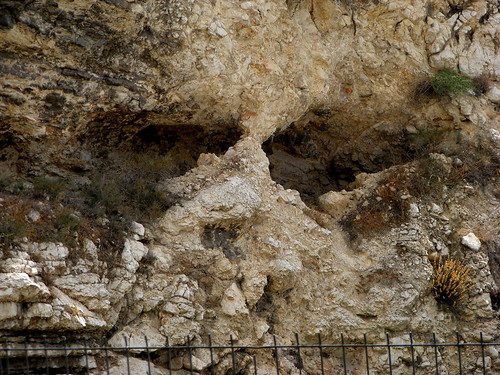The camp we were working at in the Holy Land ended with a moving time of worship and sharing followed by an hilarious talent show, mostly sending up the staff! I realise that I haven’t written much about the camp. I don’t want you to think that’s because it wasn’t great, it was. The young people were amazing and the people who run it are so inspiring. It’s just that they live in a situation where publicity isn’t all that helpful and I don’t want to make their lives any harder than they might be already.
We had a couple of days in Jerusalem before coming home. We wandered the Old City for a while in the afternoon and went for a meal with Leo, John and Soo before they headed off to their camp with the young leaders. I wasn’t feeling all that well at diner and spent the next 24 hours being ill.
When I recovered it was our last day. Pastor George suggested that we take a walk to the nearby Garden Tomb near the Damascus Gate and I’m glad that we did.

I found the Garden Tomb much more authentic than the Holy Sepulchre, perhaps because there isn’t a church built over the top of it! This version of the tomb is an actual tomb. In a garden. Near a hill outside the city wall. The hill even has a skull shaped erosion.

As we waited to see inside the tomb the people who were inside emerged. They were from Ghana and the women began to sing joyfully. It was beautiful and very moving to see such spontaneous joy. For them, as for us, the sign on the door was the reason for coming.

It’s not often you visit somewhere fully expecting the main attraction not to be there, but as I said in a previous post, that was my experience of the Holy Sites. There were hints and pointers to God but I found God in the kids we worked with and the adults we met, not in the buildings we visited.
It was amazing to see where Jesus had been, where He walked and talked and taught, but the sign of reformed Christianity is an empty cross and that seems appropriate.
It seems strange that Jesus was crucified for criticism of religiosity and yet churches full of ornaments mark every significant site where Jesus walked.
It seems strange that Jesus command to his disciples was to love each other and yet his followers argue and fight over those Holy Sites.
It seems strange that the temple curtain was torn when Jesus died, that a tomb could not contain God’s love, that God is on the loose and yet we try our best to put him back in a box where we can look and touch and control him.
I absolutely agree that the main point is the presence of Jesus with you and the children. Though I think Jesus got himself crucified for annoying more people than the religious leaders – I’m frequently astonished he lasted as long as he did.
But I have become convinced that, historically speaking the site of Holy Sepulchre (or as the Greeks so much more appealingly call it, the Resurrection) is the site where Jesus was crucified and was buried. I cane to this backward. I am writing the biography of a Victorian figure to whom Holy Sepulchre was very significant. I therefore looked at what the Victorians thought of it. They thought it lay inside the 1st c. city, and inside the wall. I got interested and read on. I read of the re-discovery of the site of pre-destruction Jerusalem, with HS just outside it. I read of the two towers on the wall, and then of the dog leg, that put HS just outside the city wall.
If later periods had wanted to invent a site, they would have made the same mistakes as the Victorians, I’m sure. I think it is almost totally certain Jesus was crucified and buried either on the exact site of HS or within a few yards of it. If you are interested there is a scholarly and sympathetic book by Martin Biddle ‘The Tomb of Christ.’
Hi Rosemary. I think I chose the wrong word when I said ‘more authentic’. I read the guide book stuff about the city wall being in a different place and that all makes sense. I think what felt odd for me was that the site of the crucifixion is so close to the tomb and the hill is hidden by a building. That feeling probably feels accentuated because the hill and the tomb are inside the ‘same building’.
I think what I liked about the other tomb was that it isn’t inside a church. It’s a tomb that you can see and go inside and touch. I’d like to find out more. One of the regrets of our trip was that we didn’t spend much time thinking about or reading about where we were going from a historical perspective.
Thanks for the book tip!
Stewart